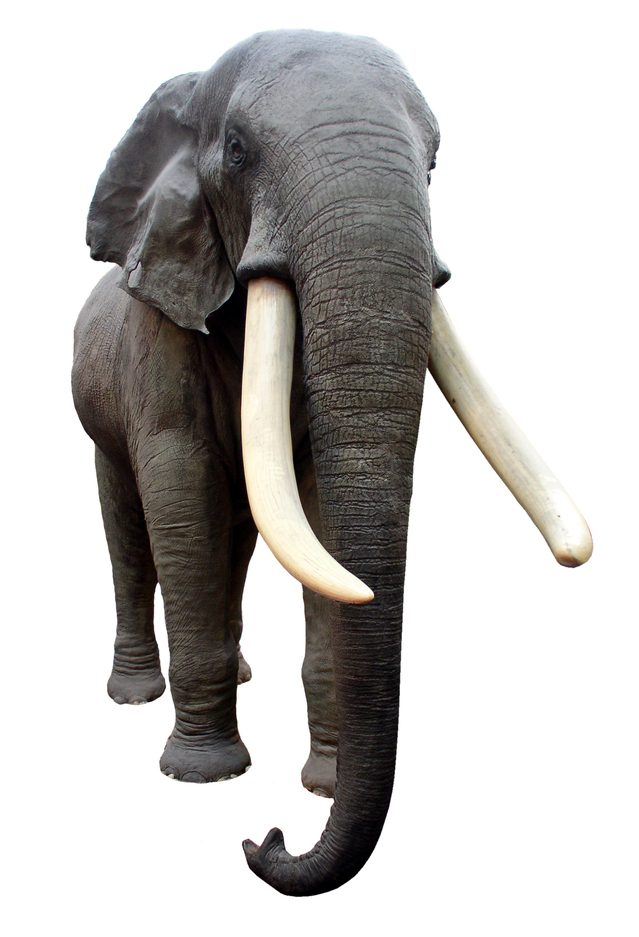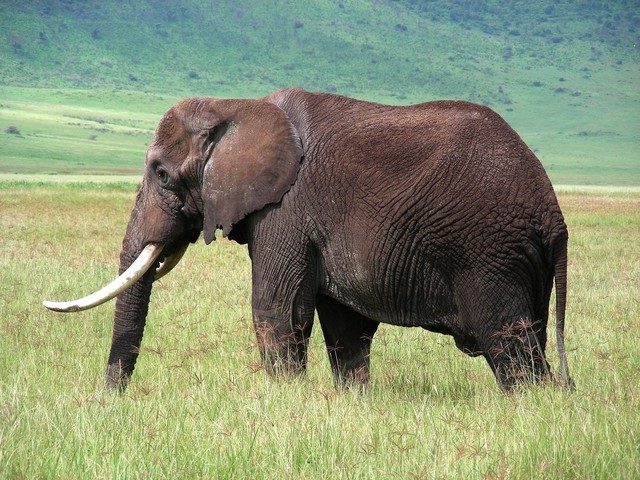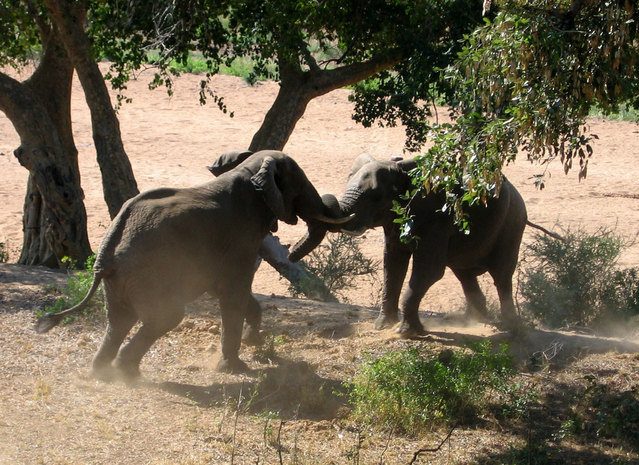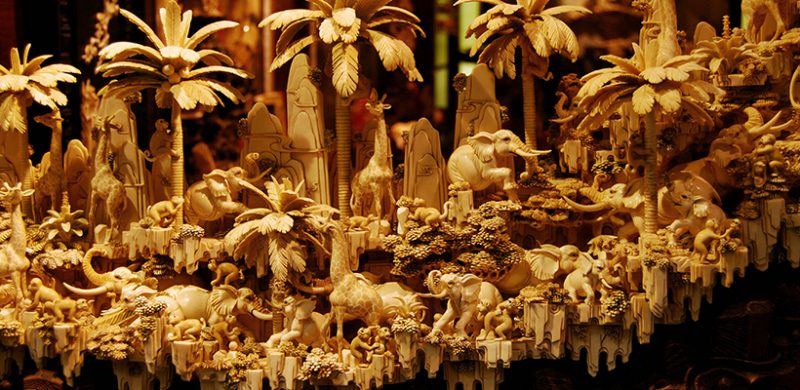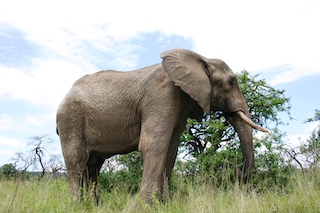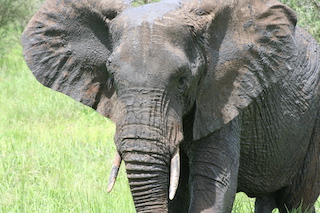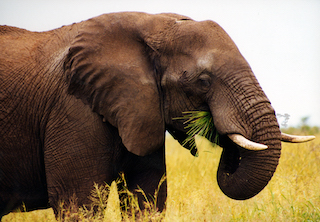The Coveted Tusks Of The Elephants
All male and female African elephants grow tusks. The female ones are thin, small, and often of the same thickness. However, in Asia, only some male elephants have tusks. The female Asian elephants do not have tusks but have tiny horns called tushes. Perhaps the elephants in Africa have a greater need for digging for sustenance.
Constitution of tusks
In elephants, tusks are elongated, enlarged, and modified incisor teeth and are no different from other teeth. Tusks can grow up to eight inches a year. One of the largest ones found weighed about 200 pounds and was about 10 feet long.
Invisible tusk part
The tusk of an elephant that is below the surface forms the base, which is a pulp cavity embedded deep in the giant’s skull. It constitutes about one-third of the tooth and is made up of tissue, nerves, and blood, like the roots of the teeth of a human being.
Visible tusk part
Two-thirds of the tooth is outside the skin. And the visible part is the ivory, which is made up of a dense dentine with a calcified rind called cementum and a layer of enamel. The material is soft enough to be carved. When one views elephant ivory in cross-sections, it reveals diamond-shaped crisscross lines.
Right or left
Evidence suggests that elephants have a preference of one tusk over the other. In humans, it is similar to being right or left handed. The preferred one, called the master tusk, is the one mostly used for their primary jobs. The dominant tusk will be shorter as well as rounder at the tip.
Blessings of tusks
An elephant’s tusks are a blessing for the elephants because they give a sense of majesty that makes them seem to rise above other animals, not to mention the various uses for which it is put to use. Principally, they are used to aid foraging, moving things out of the way, stripping bark from trees to eat, digging, lifting objects, and gathering food. Elephants also use them for offense, defense and as weapons against potential predators or in battle with other elephants. Most importantly, tusks protect the trunk, which is tucked between the two tusks when the elephant charges. In fact, its appearance is used by researchers to track and identify elephants because no two of them are alike. They can reveal the age of an elephant relative to their peers of the same species and sex.
Curses of tusks
People make ivory out of tusks. They also take ivory from walruses, hippos, horn-billed birds, sperm whales and even from fossilized mammoths. But what makes elephant ivory so expensive is the fact that it is a material soft enough to be carved, which is the cause of the poaching problem. Therefore, tusks are also a curse to the animals because man’s greed for ivory has led to the slaughter of thousands of elephants. Poachers use high-powered automatic rifles, darts and poison to take elephants down. While the elephants are dying, they gouge out the tusks from the elephant’s skull. The animals die an agonizing and slow death from hemorrhage.
Big tusk gene
Tusks are teeth, and if broken, it stays broken. That is why sometimes it is possible to see an elephant in the wild with only one tusk. But if the root is not damaged or injured, it can continue growing from there. Tusk shape and size are inherited. But, the average size of the tusks has decreased over the past century because ivory hunting has resulted in the decimation of its gene. Today, most of the oldest elephants with the largest tusks have been poached and killed for their huge tusks. Hence, their genes are no longer inherited. Now large sized ivory is becoming increasingly rare. Therefore, poachers are going after the younger males and females, which spells disaster for breeding elephants.
Old and new
Antique ivory is pricier than new ones. In 2014, the authorities put in place an import and export ban on elephant ivory. But sadly, non-commercial and personal usage of antique ivory is permitted. International traders abuse and take advantage of this enormous loophole. To profit from their crimes, they even rationalize the market for old ivory. The disturbing practice creates a huge market for old ivory. On the other hand, as far as new ivory is concerned, it is hard to make out the age of carved ivory. So, they artificially age new ivory and forge papers about the selling and buying dates and sell them to people who cannot afford old ivory.
Vicious circle continues
The more expensive the ivory is, the more the people will buy new ivory as a profitable investment. Thus, a market is created for new ivory as well. The truth is that any ivory market, whether old or new, creates a demand for tusks, leading to the extinction of elephants.
Protection and maintenance
China is currently the largest market for ivory, closely followed by America which continues to allow inhumane hunters to trade ivory and elephant heads as trophies. The elephants in Kenya are listed as endangered species because they are threatened not only by poaching but also by habitat loss.
Poaching in Africa
Ivory poaching has been much severe in African countries than anywhere else. The number of African elephants was reduced by more than half within a span of ten years from 1979, partly as a result of demand for ivory. But in some parts of Africa, they are abundant and hence culling is practiced to prevent habitat destruction. Ivory trade has been banned since 1989, putting hunting outside the law. Since then, authorities have confiscated tusks every year. But in 1997, an ivory trade ban was lifted, and Botswana, Zimbabwe, and Namibia were allowed to sell stocks of ivory to Japan from government warehouses. South Africa joined the three African nations in 2000 in the sale of limited ivory from existing stocks.
Impractical poaching solutions
Many poaching solutions have been proposed such as dyeing or scarring the tusks of the elephants. They are impractical because they would have to infuse the watering holes with dye or dart the animals with anesthetic. Placing chemicals in the water risks poisoning not only the elephants but also other animals who use the same water source. On the other hand, darting can maim or even kill an elephant. Moreover, the scars of the ivory could cause infection.
Alternate to ivory
Synthetic celluloid ivory of the same standards as real ivory is available in the market. In China, its price is 20% less. A tree called Tagua produces nuts that they sculpt like ivory for making jewelry to umbrella handles. It is an inexpensive and renewable alternative.
5 Frequently Asked Questions About Elephant Tusk
To receive a colourful digibook about elephant with videos, images and text, please fill out the following form or simply email us on safaris@safari-center.com

